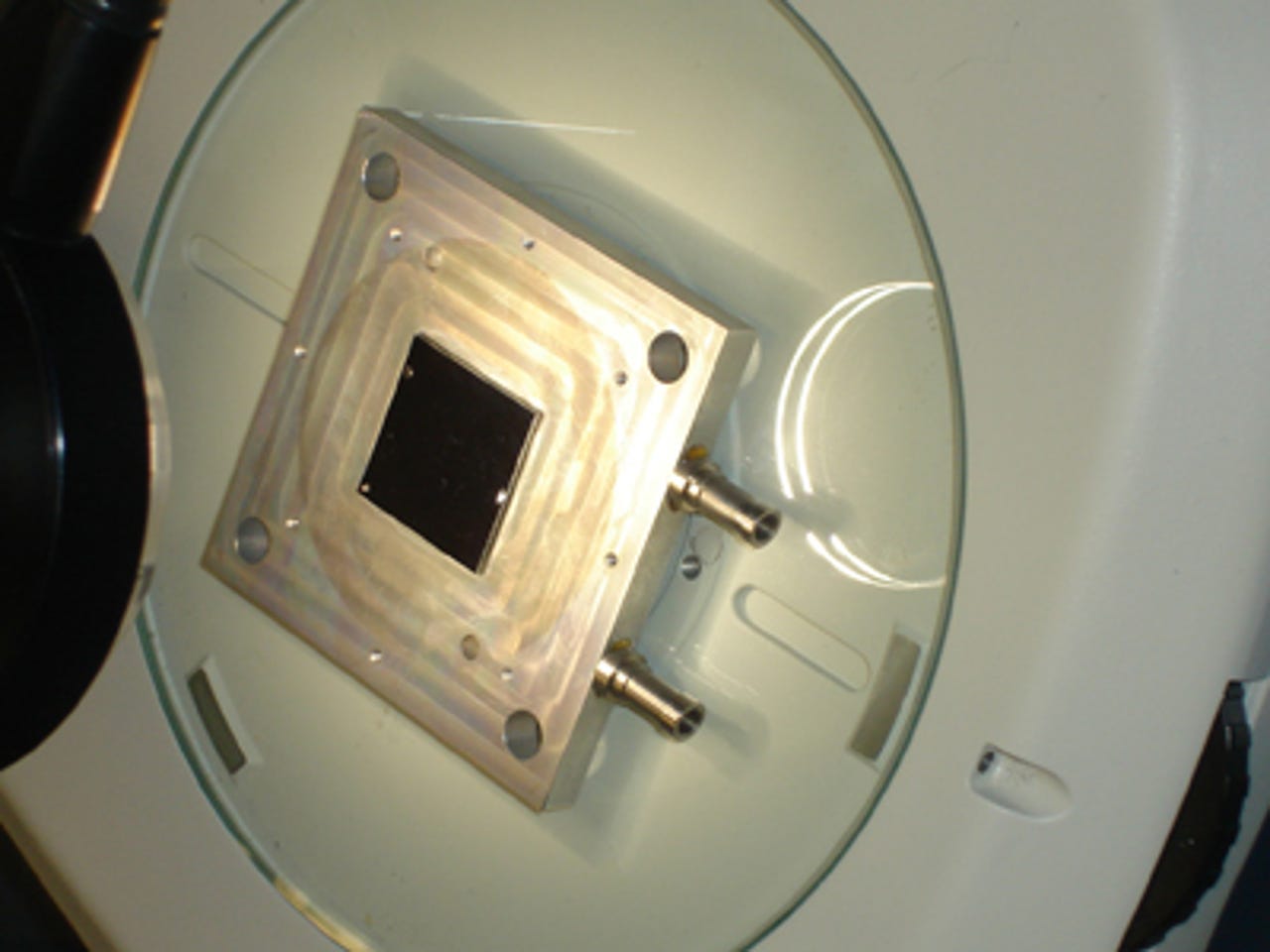Photos: Inside IBM's Zurich research lab

This is the entrance to the IBM Research laboratory in Zurich, Switzerland, which will host a double celebration this summer.
The lab, founded 50 years ago, was IBM's first research facility outside the US. And 25 years ago the lab made its most famous research breakthrough: the scanning tunnelling microscope, which provided the foundation for understanding and working with nanoscale technology.
That breakthrough brought a Nobel prize in physics in 1986 for Gerd Binnig and Heinrich Rohrer. Only a year later the lab hit the research jackpot again when Georg Bednorz and Alex Mueller scooped the same prize for their work on high-temperature superconductivity.
Two Nobels in two years is some achievement, especially as IBM Research as a whole has only won a total of three.
To mark the anniversary, ZDNet UK visited the Zurich lab to see some of its current research.
Despite its pedigree, IBM Zurich is quite small. There are 240 employees and 50 pre-doctoral and 30 post-doctoral students. IBM Research as a whole has 3,500 employees in eight laboratories around the world -- three in the US, including Thomas Watson, which is the largest.
The work of the lab in Zurich varies widely, from advanced silicon research (some of the most cutting-edge in the world) to helping IBM's consulting arm win new business.
"IBM's research division is the largest private research organisation in the world," said Dr Karin Vey, communications manager for the Zurich lab.
Investigating nanoscale objects is a hugely tricky process -- even with a scanning electron microscope -- and the research needs to be conducted in a special atmosphere. This particular work, conduced by Dr Walter Riess, the research manager for nanoscale structures and devices, is looking at ways of growing nanowires.
A nanowire is an extremely narrow object that has an aspect ratio (the ratio between length and width) of 1,000 to 1 or greater. At this time nanowires and their possible uses exist only in the realms of research, but Dr Riess and his team are investigating different elements for their suitability for "growing" nanowires, and trying to deduce the properties those wires will have. The aim is to use nanowires to manufacture microprocessors.
A microprocessor built from nanowires whould, in theory, be much more powerful than current processors since computers are based on electrical signals running through very narrow channels. Today's microprocessors are so small inside that signals leak and create interference, which is a problem that will only get bigger as the channels get smaller. Can nanowires conduct electrical signals in nanoscale structures? A lot of science needs to be done before we know the answer to that one.
We asked Dr Riess what the most promising materials were for creating nanowires. His only answer was to smile.
Another major focus for IBM Zurich is research into ways of dissipating heat from microprocessors.
Heat has been an issue in computing since the days of mainframes when methods like water cooling were used to try and keep processors from melting. It remains a problem today, even though manufacturers have tried a range of possible solutions from complex fans and air cooling to massive heat sinks.
Dr Bruno Michel, manager for advanced thermal packaging, and his team are working on a procedure that uses a combination of techniques to find more effective cooling. The secret is all in the packaging -- Dr Michel's team are working on a chip package that puts a thermal paste directly on the processor and then attaches a heat sink that can dissipate some of the heat.
This picture shows a chip (left) with thermal paste added and a copper heat dissipater attached. The liquid cooling attachment (shown right) is also experimental.
Dr Michel and his team are testing many different pastes that can be used as adhesives for attaching processors and have great heat dissipation properties. As you would expect, he does not want to talk about the different pastes they use.

Instead of a heat sink, chips could be covered with a liquid cooling device. This is an "immersion jet impingement" with distributed coolant returns.
The device is about the size of the packaging on a current Pentium processor but inside that small space there are 50,000 coolant nozzles. The result is that coolant can be circulated very quickly.
Dr Michel believes this is another promising research strand.
Another area under examination is "the I/O bottleneck". As Dr Christian Menolfi who specialises in I/O links explained, you can see the issue simply by looking at the back of an I/O processor.
"Pin counts are getting very large," Dr Menolfi said. "We are looking at needing 1,000 just for I/O. The complications of the I/O pins are growing faster than the number of pins. This is the package bottleneck."
The answer, according to Dr Menolfi, is advanced, multi-channel signalling (shown in the top-left display). By arranging the I/O channels in the optimum configuration the Zurich researchers hope to guarantee maximum data throughput.
Optical technology could also be used to improve signalling performance. Dr Christoph Berger, a Zurich specialist in this area, demonstrated the theories and practice of optical devices.
This is a four-way, optical interconnect unit. Mountings for two processors are shown with space for two more.
The processors sit on the mounts. If you attach a microprocessor to a mounting and optical cables to both the input and an output, it is possible to look down one cable and see through the other.
Showing the capability to see one's own hand through a cable that compresses down to run across a microprocessor is one of the more eye-catching (no pun intended) demonstrations at the IBM Zurich laboratory.
The more practical side of advanced scientific research can also be seen at the Zurich centre, where a range of practical, leading-edge products were on display.
This included projects for ID cards that use the most complex engraving technology so that a picture is not ON a card, but part of the card's physical structure; a health monitoring system that uses a mobile phone to keep a doctor aware of a patient's essential health data and sound an alarm if the parameters change; and a security system that can track people at room level -- for situations where it may be OK for someone to walk into the room but not a particular part of it.
One practical system undergoing final testing with an unnamed transportation company will track containers anywhere in the world and can raise a flag if the container is opened, even if it's 2,000 miles away.
This particular project users wireless, RFID and related technologies for monitoring and tracking.
The challenge for Zurich scientists has been not so much how to track containers, but how to produce a tracking system that can monitor 10,000 containers individually. Monitors and sensors will have to be powered off batteries for a year or two, keep in contact with a base anything up to 2,000 miles away and still come in at a reasonable cost.